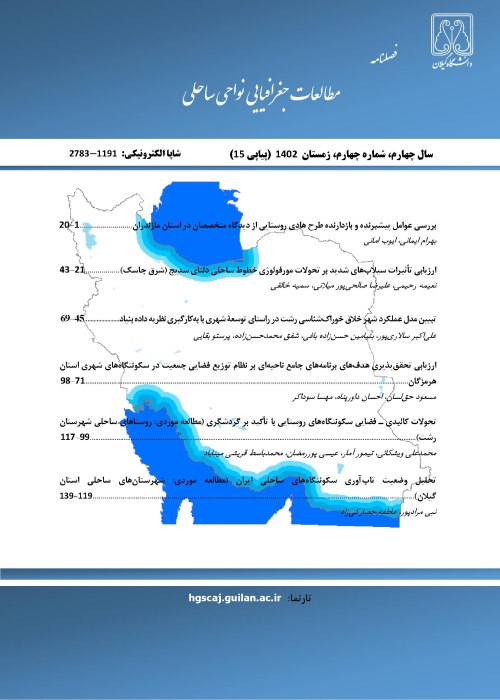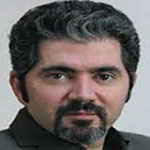Identification and Analysis of the Prominent and Influential Factors in Good Urban Governance
As an interconnected whole, the city needs a strong organization with integrated management. With the entry of the private sector and volunteer groups into policy and government, we can see a more desirable form of city administration. Cities have found no way to govern and manage themselves except laying the groundwork for the development of democracy, all of which implies a new way of governing cities called good urban governance. This model is defined as a participatory development process in which all stakeholders, including the government, the private sector, and civil society, provide a way to solve the problems of the rapid urbanization process. This paper aimed to identify the influential and prominent factors in good governance of Urmiā. It is applied in terms of purpose and descriptive-analytical in terms of the research method. The nature of the data is qualitative and quantitative, and the method of data collection is the library research and field (interaction questionnaire). The research sample included 35 experts of urban planning, city managers, and researchers (22 managers and experts and 13 researchers) who were selected by the Delphi method and snowball. The prominent and influential factors have been analyzed in the Maxtor software environment, and the degree of competitiveness, convergence, and agreement among the main factors have been determined. Twelve prominent and influential factors in the good governance of Urmiā were examined. The results showed that direct and indirect effects among the factors represent the highest number of effects for a provincial factor with 187 effects. The highest level of competitiveness was related to the social networks, with a rate of 1.83. Road development, housing, and an urban management organization with 12 events per goal have been identified.Highlight-Identifying and examining actors, creates benefits and capacities for managers and planners of Urmia city that can be fully synchronized with facilitating the principles of good urban governance.-The classification of the governing actors of Urmia city in the diagram of influence and effectiveness indicates the existence of a vicious cycle in the interactions between the effective actors in the management process of the city.Extended Abstract Introduction The city needs a strong organization with integrated management as an interconnected whole. With the entry of the private sector and volunteer groups into policy and government, we can see a more desirable form of the city administration. Cities have found no way to govern and manage themselves except by laying the groundwork for the development of democracy, all of which implies a new way of governing cities called good urban governance. This model is defined as a participatory development process in which all stakeholders, including the government, the private sector, and civil society, provide a way to solve the problems of the rapid urbanization process. The question that arises in this paper is who are the role-playing actors, influential people, and prominent forces in governing the city of Urmiā? Efforts are made to explain better the various dimensions of a better understanding of the conditions of urban managers and policymakers and their position in the city of Urmiā to be understood from the citizens' perspective. This can be an effective step to eliminate the deficiencies and shortcomings in the structural and executive body.The literature review (identification of the main actors of urban governance) indicated that there is no research on the subject under study. Therefore, this research is a step towards advancing this important issue for the city of Urmiā. Also, the subject's methodology under investigation is another novelty aspect. Mactor software examines and analyzes the actors influential in realizing good governance in the city of Urmiā. This study tried to provide a model to improve the current process of developing urban governance programs. On the one hand, the prepared projects meet the needs of the people and the urban system and, on the other hand, provide a suitable platform for improving the feasibility of urban spatial development plans.Methodology This paper aimed to identify the influential and prominent factors in good governance of Urmiā. It is applied in terms of purpose and descriptive-analytical in terms of the research method. The nature of the data is qualitative and quantitative, and the method of data collection is the library research and field (interaction questionnaire). The data analysis method is quantitative-qualitative (mixed method) in this research. According to the needs of this research, the sample population includes experts and elites who have the necessary and sufficient expertise in the field of integrated urban management and good governance in the studied city. The research sample included 35 experts, specialists, and elites selected by the snowball method. We asked the experts to introduce the next person to us. Hidden and overt actors in urban management and good urban governance were extracted through an open questionnaire and the Delphi method. After gathering the actors and goals, the matrix of works was formed in two stages, so that the indicators are placed in its rows and columns. Excel and Mactor software were used to convert indicators and variables After gathering the actors and goals, the interaction matrix was formed in two steps, in a way that the indicators are located in rows and columns. Excel and Mactor software were used to convert indexes and variables. The research method is done in 8 steps; the first step is to identify the actors and the goals, the second step is the interaction of the actors with each other, the third step is the effects of the actors and the goals on each other, the fourth step is the analysis of the actors' performance, the fifth step is the competitiveness of the actors; the sixth step is the position of the maximum matrix of the actors, the seventh step, is the degree of convergence and divergence among the actors, the eighth and the final step agreement of the actors between the goals. Twelve prominent and influential factors in the good governance of Urmiā were examined.Results and discussionFindings showed that direct and indirect effects among actors represent the highest number of influences for governorship with 187 effects. Social networks were the most competitive with 1.83%. Twelve events per goal have determined the purpose of developing roads, housing, and organizing urban management. According to the results, to achieve good governance for the city of Urmiā, the participatory planning system should be improved, and the transfer of management of local affairs in the areas of administration, coordination, supervision, and regulation should be established.ConclusionThe present study has tried to analyze the impact, effectiveness, convergence, divergence, agreement of actors and goals by identifying the influential actors in good governance of Urmiā from the experts' viewpoint in the field of urban planning and urban management. The classification of the governing actors of Urmiā in the chart of influence and effectiveness indicates the existence of a vicious cycle in the interactions among the influential actors in the management process of the city. The most influential and effective actors are the governmental organizations and institutions, but the actors and public stakeholders such as universities and consulting engineers and the engineering system that should be part of the influential group are practically in the lower category of influence and effectiveness. Also, the convergence and divergence among the actors over their goals showed that the greatest convergence is among public actors. However, according to the city's ultimate goal of good governance, it should be among the government institutions. Regarding the poor coordination among the urban management institutions, the power of government-affiliated actors (governorate, management organization, road, and urban development, etc.) has been more than the total weight of private and public actors. Such a situation can be considered one of the reasons for the lack of proper management of a city, which necessitates paying more attention to the actors and stakeholders in the management process and the city's governance.Funding There is no funding support.Authors’ Contribution Authors contributed equally to the conceptualization and writing of the article. All of the authors approved the content of the manuscript and agreed on all aspects of the workConflict of InterestAuthors declared no conflict of interest.Acknowledgments We are grateful to all the persons for scientific consulting in this paper.
- حق عضویت دریافتی صرف حمایت از نشریات عضو و نگهداری، تکمیل و توسعه مگیران میشود.
- پرداخت حق اشتراک و دانلود مقالات اجازه بازنشر آن در سایر رسانههای چاپی و دیجیتال را به کاربر نمیدهد.




